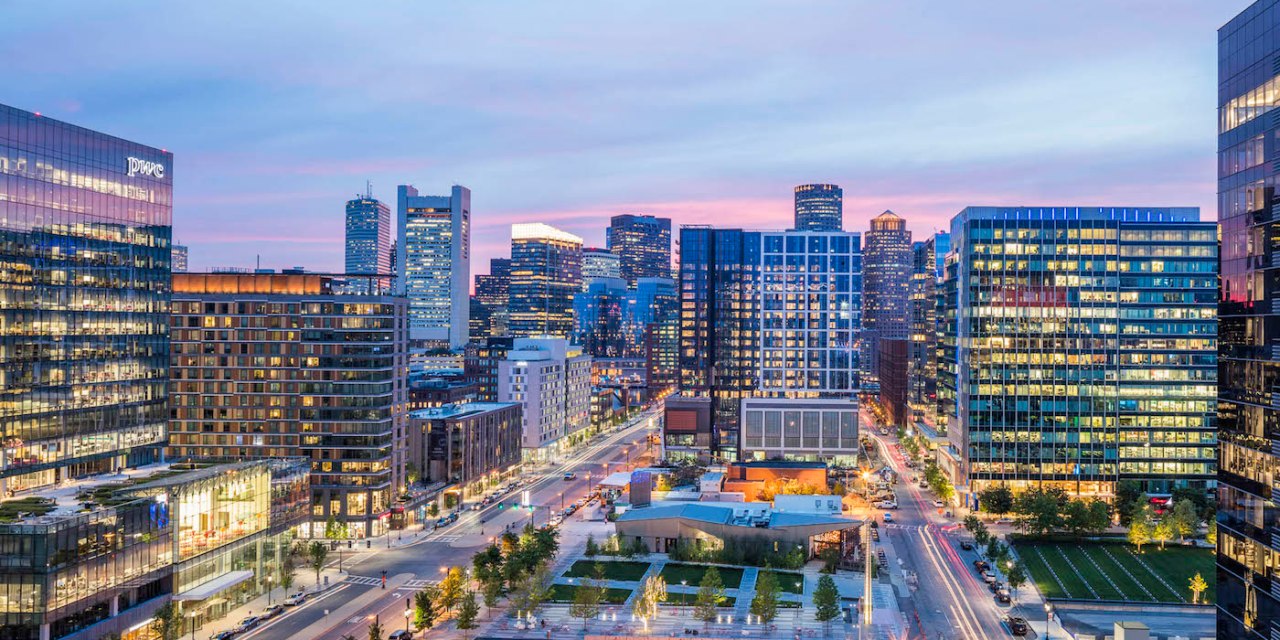How one open-air mall is preparing to drive shoppers back over the summer

As malls prepare to welcome back shoppers, the types of experiences that they are willing to step out of the house for has changed.
Rather than spending hours rifling through racks of clothing, some shoppers are turning to curbside pickup. Instead of spending a Saturday at the movie theater, they may stop by a restaurant that’s open for outdoor dining. And that means some malls may have to reconfigure their space to make way for new types of attractions.
Boston Seaport, a seven and a half million square foot open-air development, never technically closed during the stay at home orders, as it had some tenants that were deemed essential businesses — CVS, as well as some restaurants that were open for takeout. But, as more businesses have been allowed to reopen in Massachusetts, Boston Seaport has been working with tenants to allocate more space for new types of services that it hopes will keep shoppers coming back to the mall this summer, like curbside pickup and outdoor dining.
The coronavirus pandemic is forcing malls and tenants to work more closely together as they try to figure out what it will take to get customers to come back after months of store closures. Open-air malls may be at more of an advantage as some people remained concerned about the risk of catching the coronavirus indoors. But, as all activities move outdoors, that means there’s going to be more competition amongst all the outdoor dining spots and open air exercise classes. And, it remains to be seen just how high enthusiasm remains for these activities as the summer drags on.
“There appears to be significant pent up demand right now from shoppers for any experience that isn’t just being in your house, and especially for outdoor dining” said Bryan Gildenberg, svp of commerce at Omnicom Retail Group.
“We’ve seen a significant increase in foot traffic here, particularly on the weekends, a lot of people have been coming here to take advantage of the weather,” said Todd Norley, vice president of WS Development, which owns Boston Seaport. Currently, 73% of Boston Seaport’s tenants are open, as Massachusetts allowed retailers to reopen on June 8, alongside restaurants for outdoor dining.
Before the coronavirus, Boston Seaport’s strategy, like that of many other newer shopping developments, prioritized hosting more activities — and securing tenants that would draw people to its mall on a regular basis — over the usual slate of mall-based apparel retailers. For the past several years, it has hosted a farmer’s market in the spring and summer. Boston Seaport has also proven to be a popular destination for DTC brands like Everlane and Mejuri.
As Boston Seaport has been preparing for more people to stop by the mall over the summer, Norley said that the development’s main focus has been on being the go-between for its tenants and the city to help get them what they need to prepare for the summer months. That has entailed helping its tenants secure the proper liquor licenses to serve dinners. Boston Seaport also had an outdoor beer garden that has had to remove some seating to allow for more social distancing.
Boston Seaport has also started dedicating select parking spaces to curbside pickup, which other mall owners like Kimco Realty have done at its properties. Boston Seaport is also in discussions with its retail tenants to create a “shop the table” program, where retailers can set up displays on the sidewalks to cater to shoppers who don’t want to come in stores. Lastly, Boston Seaport is working on adding outdoor fitness classes, which people have been able to livestream the past several months.
For the rest of the summer, Norley said that Boston Seaport would be looking at what else it can add, from art installations to other outdoor events, to keep people coming back to Boston Seaport for new experiences. “The public outdoor gathering opportunities are tremendous here,” he said.

